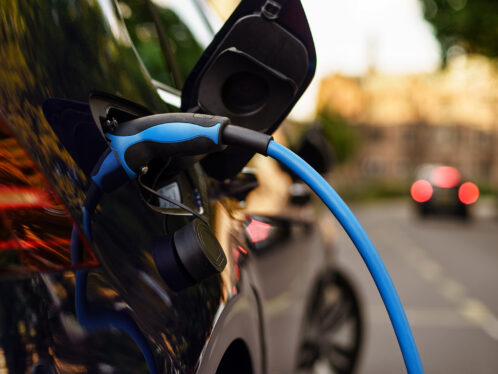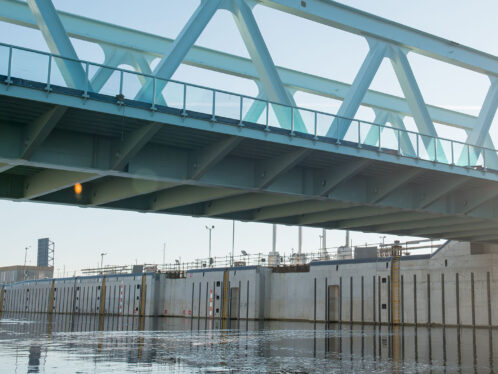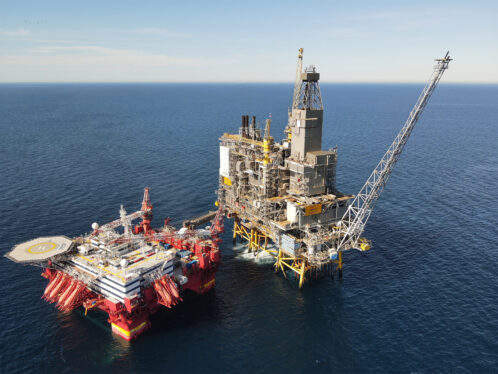
Racing for the market
Summary
Bearings on the raceway
Aprilia and SKF collaborate on a joint programme dedicated to the development of bearings for motorcycle racing. Tests are conducted with the goal of reducing to an absolute minimum power loss due to friction. For this reason, all SKF bearings fitted to Aprilia’s machines have low friction seals and are filled with specially manufactured grease.
Bearings for the heart of an Aprilia bike – the engine itself – are purpose-built. This guarantees the correct tension in the crankshaft and a reduced axial and radial clearance. The gearbox contains several ball bearings, each with a unique, calibrated clearance to avoid unnecessary friction or too large a clearance.
When Aprilia motorcycles scream to victory at the track, this Italian company sees a victory in the market as well.The ink-black racing colours of an Aprilia motorbike may pale beside the Ferrari’s blood-red livery, but in June 1999 it made little difference to motorbike fans who celebrated the team’s double victory in the 125-cc and 250-cc classes at the Italian Grand Prix.
Thousands of Italians grabbed the nearest red-white-and-green flag and poured onto the Mugello racetrack to swamp 250-cc rider Valentino Rossi on his Aprilia bike, briefly knocking the rider off. “Young Italians live, breathe and sleep Aprilia,” says Filippo Falsaperla, a motorcycle journalist with the daily Gazzetta dello Sport. “Riders like Rossi and [125-cc rider] Marco Melandri are the teenage heroes of Italy.”
Although it wasn’t until 1985 that Aprilia President Ivano Beggio first entered his company’s motorbikes in a Grand Prix event, the company reflects Italy’s long tradition of success in two-wheeled sport.
Its riders have scored 88 victories, winning 12 world championships (nine in the last five years) and four manufacturer’s titles. “We are the only European trademark able to compete with the Japanese giants for victory on world championship racetracks,” says Beggio.
A circle of success
In the 1999 season Aprilia raced in all three world motorcycle championships and the world Superbike championship. In the 250-cc class alone, seven motorcycles rode for Aprilia’s Racing Division. In 1998, Aprilia boasted a turnover of more than 1 trillion lire (US$550 million).
“For Aprilia, success on the racetrack and success on the markets are equal: The first one reinforces the second, in a virtual circle,” says Beggio. “Thanks to the 12 world championship titles, the Aprilia trademark has become famous all over the world.”
With the world’s racetracks doubling as a global showroom, it is estimated that an Aprilia bike is sold somewhere in the world every two minutes. Production has soared from 50,000 in 1991 to 300,000 in 1998 – a natural spinoff from Aprilia’s spiral of success. About half of the bikes are sold outside Italy, and Aprilia now has branches in France, Germany, Spain, the Netherlands, the United Kingdom, the United States and Brazil. The company claims that if all Aprilia motorcycles in circulation today were queued up, they would stretch from company headquarters in Noale, near Venice, to Palermo in Sicily – literally the length of the Italian peninsula.
Aprilia’s racing department is located in Noale and its main production plant is in Scorze, both deep in Italy’s northeastern Veneto region. At the recently modernised Noale facility, a visitor is met with the impressive sight of 20 computerised test cabins where engineers can simulate the stress and strains of a virtual Grand Prix. Motorbikes produced for commercial use at the Scorze plant get the same treatment. Each of the 2,500 vehicles that roll off 11 assembly lines every 24 hours faces an exhaustive series of tests.
From the humble moped
In the 1970s and 1980s, however, not many would have guessed that Beggio’s fledgling company would soon follow in the footsteps of other Italian motorbike companies such as Moto Guzzi or Ducati. Beggio’s father established Aprilia as a humble moped manufacturer in the ’70s and the only hint of the company’s glorious future lay in his son’s passion for motocross. Even when Ivano took his first tentative steps into 250-cc class racing, there was no sign that Aprilia would be successful. The team was called Aprilia, but its bike had an Austrian engine and its driver, Loris Reggiano, finished well off the podium.
According to Gazzetta dello Sport’s Falsaperla, Aprilia’s road to success began in 1990 with the arrival of Jan Witteveen as chief designer of the racing division. The Dutchman quickly adopted the innovative designs and technical solutions that Beggio had always sought for his commercial motorcycles, applying the same logic to motor racing. “Witteveen concluded that if Aprilia was to surpass the Japanese, Aprilia would have to follow its own original road,” recalls Falsaperla.
The result was a series of highly innovative solutions of chassis and engines, for example an improved method for mixing fuel and air before combustion. Witteveen’s new designs soon opened the most successful period in Aprilia racing history, with Alex Gramigni claiming the 1992 world championship in the 125-cc class. By 1994, the team was celebrating a double triumph: Max Biaggi won the 250-cc class and Kazuto Sakata took the 125-cc title.
This season, Witteveen has applied the technological innovations that brought Aprilia success in 125-cc and 250-cc to the 500-cc class. Japanese Tetsuya Harada is riding a twin-cylinder Aprilia.
Flexibility advantage
Over the years, it has also become apparent that the legacy of Aprilia’s small workshop beginnings gives the company a vital advantage – flexibility. Once motorbike enthusiasts sat up and took notice of Aprilia, they were pleasantly surprised to discover the same technological innovation and flexibility shown on the racetrack mirrored in the company’s commercial machines. The company offers a complete range of motorcycles from 50-cc scooters to super-sport road bikes.
“Racing is not only a way of promoting our business, it’s part of it,” says Beggio. “We’re convinced that developing motorcycles on the circuits has contributed, and will continue to contribute, towards giving our customers a better product.”
Of course, it is unlikely that Aprilia’s technological advances would have had quite the same impact on sales if the company did not employ the right riders to win races. Even here, Aprilia set a new trend. Determined to maximise the formidable promotional benefits of world championship successes, Aprilia handpicks riders deemed to have market appeal.
Over the years, the company has deliberately nurtured young talent such as Biaggi, Gramigni and, most recently, Rossi, to guarantee a captive audience for its products. From 125 cc to 500 cc, Aprilia’s racing machines all have road equivalents on the market. Rossi, whose rebellious image has created a cult following among teenagers throughout Italy, promotes a new range of scooters – one of Aprilia’s biggest-selling sectors.
In Italy’s traffic-congested city centres, motorbikes have always been the young person’s preferred means of transport – but Aprilia’s skilful marketing has shifted the focus from motorbike to scooter, launching 40 new models in Italy.
Such versatility is rooted in a company structure based on coordinated production by a series of small firms. While planning, marketing, product research and development and quality control are concentrated in Noale, with assembly in the Scorze plant, the manufacturing of single components is allocated to a network of small and medium-sized suppliers. For example, Marsciano near Perugia moulds and paints plastic components for scooters, and a plant in San Marino will form the seat of Aprilia’s new centre for engine research and production.
To stay on the cutting edge of the industry, Aprilia is also collaborating with the engineering faculty of the University of Padova to establish a postgraduate course in motorcycle theory and techniques. There have also been joint initiatives with the University of Venice and the prestigious Bocconi University in Milan.
In 1957, after winning 65 constructor’s championships, Moto Guzzi withdrew from racing. There is little sign that Aprilia will follow suit. As Beggio puts it: “I am certain that our racing team will manage to keep the flag for Italian technology flying high on the circuits as well as markets all over the world.”
Chris Endean
Rome correspondent for the Sunday Telegraph
photo Aprilia




